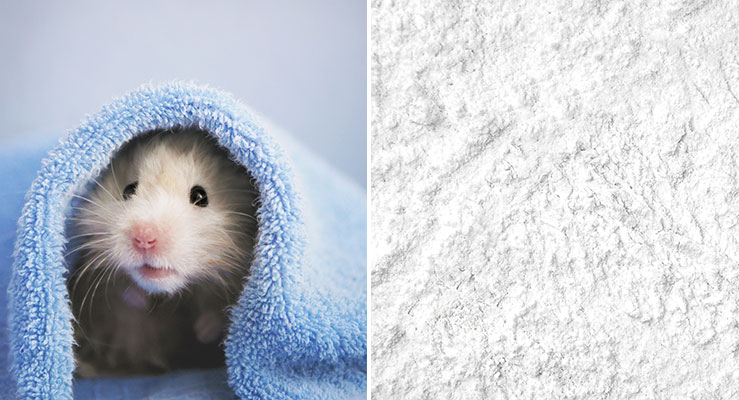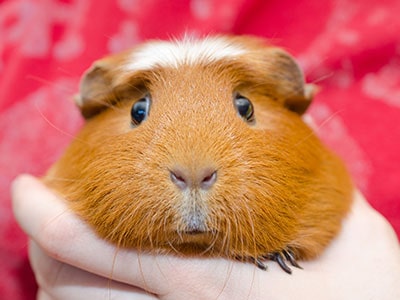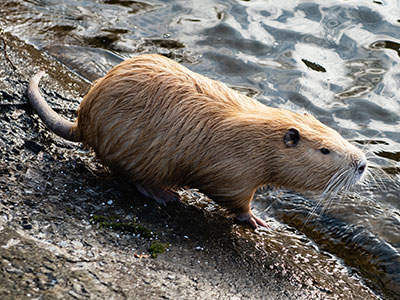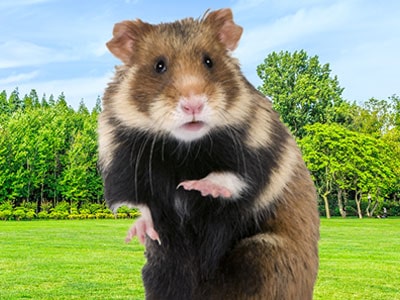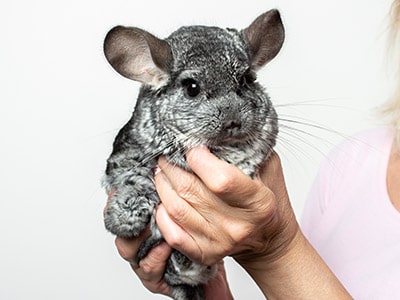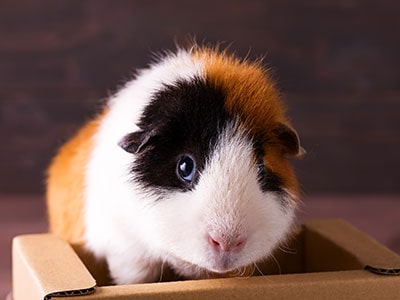Are dust baths good or bad for hamsters? Read the full article to find out the dangers you are exposing your hamster to when giving him a dust bath and how to avoid them.
Hamsters are some of the most common house pets. These little critters are preferred by most due to the fact that they don't require too much room and are not very difficult to care for. However, one aspect related to hamsters can become an argument against owning these rodents as pets - that they can be quite smelly.
If this happens, many hamster owners will consider that their pets need a bath, and most of the time this will be a dust bath.
This is the topic that we will discuss next. We will try to see whether dust baths are good or bad for hamsters, as well as if they need baths at all.
Are Dust Baths Good Or Bad For Hamsters?
There are several products on the market with labels claiming that they are intended for the baths of hamsters, gerbils, and other small pet rodents. However, many of these products have been shown to be harmful to hamsters.
This is because these powders are usually very fine and will be inhaled by your hamsters which can cause them several respiratory diseases, or in severe cases, even death.
Even if the manufacturer explicitly states on the label of a product that is entirely safe for hamsters, if the content has a very fine powdery texture, it should never be used for this purpose.
Also, never use chinchilla bath dust for hamsters. While dust baths are safe for chinchillas, which in their natural habitat take frequent dust baths to better absorb skin oils and keep their coats clean and healthy, these are not good for hamsters.
However, there are products that can be used if you want to give your hamster a relaxing bath.
Dust Baths Vs. Sand Baths For Hamsters
As mentioned above, there are some products that are safe for hamsters' baths. These normally have the term "sand" in their names instead of "dust." The main difference between dust and sand is the size of the particles.
While the particles of an unsuitable product are extremely small and usually have the texture of a powder, a suitable bathing product for hamsters must contain much larger granules that do not rise in the air when the animal bathes in it.
However, pay close attention to some products that are called "sand" but are actually more of a powder.
Unfortunately, there are a number of sellers that despite the word "sand" in the product's title and the specifications passed on the label claiming that the content can be used for bathing hamsters, the pack actually contains fine dust instead of sand.
Usually, you can test these products quite easily. If you put some of the content in your hand and a large amount of dust remains after you drop it, then it means that the product is too fine to be used for your hamster's bath.
There are also cases when certain manufacturers have gradually changed the granulation of the products they deliver. So although initially these products have had a suitable granulation, over time, they became finer and finer and have basically turned into dust.
Therefore, it is good to always check the consistency of the powders that are delivered in your bag, even if you know the manufacturer and you have bought from that company in the past.
How To Choose A Hamster Bath Sand
First of all, it is good to buy only from reputable pet shops. Even so, it is not enough to ensure a product is 100% safe for your hamsters.
As an initial step, before making a purchase decision, only look for products that contain "sand" in their names and not "dust" or "powder."
Before giving your hamster a bath, carefully analyze the granulation of the content inside the bag you've bought in order to determine whether it has a granular texture or a powdery aspect. If it looks like a powder, it's not good.
Only after being sure that you have a product that does not put the health of your hamster at risk, you can offer him a relaxing sand bath.
As an alternative to the hamster bathing sand you find in pet stores, you can also use some brands of children's washed play sand. Because this is washed sand, most of the extra fine dust has been already got rid of. Make sure, however, that you only buy sand that is 100% natural and chemical-free. Stay away from the ones that don't clearly state these facts on the label or the ones that contain added color pigments.
Do Hamsters Need Baths?
Hamsters are usually animals that spend a lot of their time grooming. Because they do this quite well on their own, they do not require regular baths like other pets. Usually, if your hamsters emit an unpleasant odor, this is most often the result of improper care or a neglected pet.
Like any indoor pet, hamsters need regular cleaning of their enclosure. This will not only keep your pet happy and healthy but will also prevent them from issuing unpleasant odors.
Hamsters' bedding should be changed at least once a week. This can vary depending on the size of the cage and how many specimens live in it.
If your hamster stays for an extended time in a space that hasn't been properly cleaned up, its fur can get an unpleasant smell too. The bad smell should typically go away shortly after you change its bedding.
Unlike chinchillas, hamsters don't require regular dust baths to clean their coat. They also don't need or like water baths. Bathing your hamster with water is an “emergency-only situation". [1]
Moreover, washing your hamsters with water would remove important natural produced oils from their coats and this can lead to skin diseases and other health issues.
Sand baths are also not required for hamsters to stay clean but they do enjoy them a lot.
Final Word
Baths are not necessary for hamsters. As stated above, if you decide to give your hamster a relaxation moment, the only type of bath you should give him is through a sand bath.
Avoid at all costs dust baths for hamsters or utilizing any powdery product that can cause respiratory problems to your little friend.
Resources:

